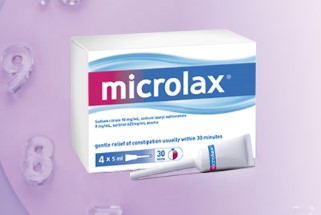
Your quick guide to laxatives
Many people suffering from constipation turn to laxatives to ease their bowels into action and find some relief. But what are some of the different types available?
Laxatives for constipation
Many people use laxatives when suffering from constipation, which act in different ways to evacuate the already digested contents of the bowel. Different laxatives will work at different speeds, depending on the active ingredient, and there are also side effects of varying intensity. Find out here what you need to be aware of.
Roughage and fibre Laxatives
Roughage and fibre are natural laxatives. Psyllium husk, wheat bran and linseed swell up in the intestine, softening the stool, increasing intestinal content and stimulating bowel activity.
Note Make sure you drink at least 2 litres of water to enable the seeds to swell up. It may take several days to take effect and you may become flatulent and bloated.
Bulk-forming laxatives
Bulk-forming laxatives, also known as fibre supplements, work in the same way as dietary fibre; they increase the bulk of your stools by helping your stools retain fluid.
Note Bulk-forming laxatives must be taken with plenty of fluid, may be several days before you feel the effects and they can cause bloating and flatulence (wind).
Stool softener laxatives
Stool softener laxatives, add water to your stools to lubricate them, making them more slippery and easier to pass.
Note That they can cause abdominal cramps, a feeling like you are going to be sick (nausea) and a skin rash.
Bowel-stimulating laxatives
Some laxatives are synthetic (e.g. sodium picosulfate, bisacodyl) and others are herbal (e.g. senna leaves, rhubarb root, buckthorn bark). Both types stimulate the smooth muscles in the intestine. This increases bowel motility via an irritant effect that hastens the passage of the stool. Fluids are absorbed in the bowel. Water absorption increases stool volume and so distends the bowel, stimulating it to evacuate its contents.
Note That these preparations are for short-term use only. Cramping, diarrhoea, loss of electrolytes may occur and takes effect after six to eight hours. If taken for a long time, may cause a ‘weakened’ or ‘lazy’ bowel.
Osmotic (water-absorbing) laxatives - taking effect in the bowel
Osmotic laxatives (e.g. macrogol or lactulose) act by transferring fluid from the blood of the intestine into the intestine. This increases stool volume, which activates receptors in the intestinal wall and triggers passage of the stool.
Note: Make sure you drink a lot to compensate for the loss of fluids. You may experience flatulence, cramping and loss of electrolytes. Depending on the active ingredient, takes effect in 1-2 days.
Osmotic (water-absorbing) laxatives – taking effect in the stool
Osmotic laxatives acting on the stool, such as MICROLAX® Enema, for example, act purely locally in the rectum without risk of bowel dependence. The solution releases the water absorbed in the stool. This makes the stool soft and flexible.
MICROLAX® is a fast and predictable alternative that won’t cause interactions.
MICROLAX® is an osmotic action micro-enema which acts only on the stool. It takes action locally in the rectum with a low risk of bowel dependence. Within 30 minutes, the bowel will evacuate.
Find out more here about the gentle mode of action of MICROLAX® Enema.
What is constipation?
If you’ve got that heavy, bloated feeling, and haven’t had a bowel movement in a few days, chances are you might have constipation.




